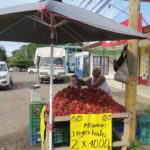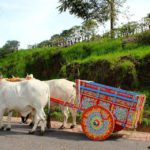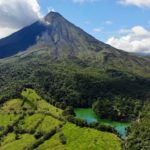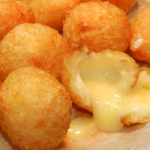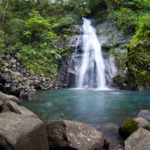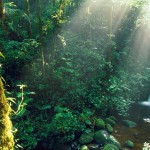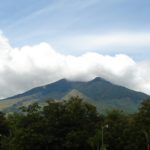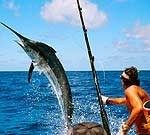Kids Saving the Rainforest (KSTR) is 22 years old! Based in Manuel Antonio, the animal rescue and rainforest preservation organization has come a long way. Back in 1999, Janine Licare and Aislin Livingstone sold arts and crafts to buy some rainforest near their Manuel Antonio homes. Soon, they realized that their nascent efforts needed to expand to help the animals that live in the forest. Saving Costa Rican rainforest and animals is outlined in the KSTR mission statement. “Protect the diverse wildlife of Costa Rica’s Pacific Coast by rehabilitating wildlife, conducting original scientific research, training volunteers, and promoting conservation.”
Today, KSTR is a non-governmental non-profit that has rescued 3,000 animals. Half have been released back into their natural wild habitat. In addition, the organization has planted 17,400 trees. Many of these are on 300 donated acres in Parrita, Punteranas. KSTR has outreach in a total of 18 countries.
How KSTR began
“My inspiration to save the rainforest was more of a gradual process than having come from a specific moment,” recalls Licare, now a professional photographer in Stanford, California. “It was the repetition of seeing trees cut down to build new hotels, seeing electrocuted monkeys and sloths on power lines on the way to school, etc.”
“However, the defining moment that inspired us to start a non-profit was when Aislin and I raised $80 by selling our artwork. My mom matched it so we had $160. We donated that money to a different non-profit in Costa Rica. When we went to visit this non-profit to see the land that we had saved, they didn’t know what they had done with our money. That was heartbreaking. This is when Aislin and I decided to start our own organization. We could always keep track of our funds and know where our money was going.”
Soon, a neighbor found a baby three-toed sloth tangled in barbed wire covered in ants. He brought the animals to the girls. With info from The Sloth Sanctuary, the kids and Licare’s mother, Jennifer Rice, nurtured the animal to their bodies for hours at a time. Eventually, they taught the sloth to climb, and more, before releasing it with a tracking collar back into the forest.
“When we received our first sloth there was no other animal rescue center in the area,” she says. “The community knew that Kids Saving the Rainforest was a conservation non-profit, so when someone found an abandoned baby sloth and there was nowhere else to take it, they brought it to us. As soon as the community heard that KSTR could care for injured and abandoned baby sloths, they just started pouring in. It’s sad to think what was happening to all the other baby sloths before the community knew they could bring them to us.”
KSTR in 2021
The Covid-19 pandemic has limited the number of staff on hand at KSTR. But, there are still people who care for the animals. This includes a veterinarian, assistant, Biologist zookeeper and four others.
Over 200 animals are received in the facility each year of about 75 species. About 50 of them remain permanently housed. The wildlife includes two- and three-toed sloths, squirrel monkeys, spider monkeys, kinkajous, coatis, marmosets, tamarins, orange-chinned parakeets, parrots, macaws and more. All animals are carefully vetted to see if they are capable of returning to the forest. Amputations and contagious diseases are two good reasons for animals to remain onsite. Those that live permanently at KSTR are considered “ambassadors of the rainforest.”
Wildlife Bridges
KSTR continues work off-site as well. They instituted a very successful Wildlife Bridge Program in 2000. It was originallys instituted to stave the extinction of the squirrel monkey (titi monkey). At the time, it was estimated that only 1,200 were left in the world. A group called Amigos Del Monos came to KSTR because they could not get ICE (the national telephone company) to help them put up monkey bridges. KSTR had better luck. Their Wildlife Bridge program began and ICE eventually joined the efforts. To date 170 bridges have been installed, with 130 of those still working so that 14 different animal species can cross high off the ground.
“Unofficial data by Lenin Roseles, the monkey bridge climber whose work ICE now does, states that we now have over 5,000 titi monkeys,” reports Rice. “KSTR is very grateful to have helped make saving this species possible. They had been on the Critically Endangered Red List since 1997. Due to the bridges, reforestation and conservation, the squirrel monkey (titi) is no longer on that list.”
Saving the Costa Rican Rainforest
The reforestation mission of KSTR is very successful. With 14,700 trees planted in Costa Rica to date, the number grows each year. This is especially important to note their efforts during this time of year. On Earth Day, April 22, the group invites people around the globe to sponsor a tree for planting.
KSTR Anniversary
Licare looks back at the 22 years of the organization she started, with her humble desire to save the Costa Rica Rainforests. She is amazed.
“I’m very proud of how far KSTR has come since the beginning,” she concludes. “We’ve been very fortunate to have an amazing team of volunteers and staff members who’ve helped us come this far.”
Adds her mother, Rice, when asked if she had any idea this would become the successful Costa Rican rainforest and animal saving organization it is today: “Absolutely not, it was just two 9-year-olds.”
KSTR is funded completely by donations today, and can be made at www.kstr.org
For a trip to Manuel Antonio, and visits to tour Kids Saving the Rainforest, contact Costa Rica Vacations.



